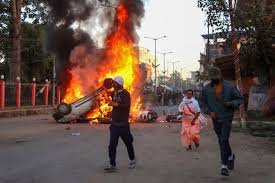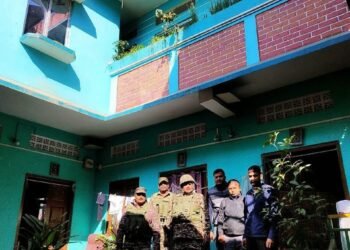The footage, seized from the Faridabad terror module, reveals Umar attempting to justify suicide bombings as deliberate missions rooted in extremist doctrine.
BY PC Bureau
NEW DELHI, November 18, 2025: The investigation into the deadly November 10 car bombing near the Red Fort has led to recovery of a video in which the alleged mastermind, Dr. Umar Un Nabi, delivers a calm and clinical justification for suicide attacks.
Senior officials confirmed that the undated footage was seized from digital devices during searches linked to the case. In the video, Umar—believed to be the most ideologically driven member of the Faridabad-based “white-collar” terror module—appears alone in a sparsely furnished room, speaking with an unsettling sense of conviction about what he repeatedly calls “martyrdom operations.”
Investigators say the video was likely intended to indoctrinate new recruits and reinforce extremist beliefs within the group. What stands out, officers note, is not just the content but Umar’s tone: measured, deliberate, and disturbingly composed as he rationalises violence.
In the footage, Umar claims that the term “suicide bombing” is “not understood correctly,” arguing that objections to it arise from “contradictions” in public perception. He attempts to reframe such attacks as acts carried out with full awareness and acceptance of death, insisting that the attacker dies “at a particular place and a particular time” chosen with deliberate intent.
READ: Crackdown in Muivah’s Village Exposes Ugly Truth, Hypocrisy About Manipur Poppy War
READ: Sheikh Hasina Slams Death Penalty, Calls Trial ‘Witch-Hunt’
“One of the biggest misunderstandings is what people label as suicide bombing,” Umar says, looking directly into the camera. “When a person believes he is certainly going to die at a specific time or place, he rejects the assumption that death will otherwise occur in a different situation. If he does not challenge that assumption, we don’t have a situation.”
Umar recorded a video justifying suicide attacks to kill “kafirs.” Listen to his polished British English. He was a doctor, but his religious beliefs turned him into a Shaitan.
Any ideology that fills a person with such hatred should be banned pic.twitter.com/CCwkWIlnrO
— Radharamn Das राधारमण दास (@RadharamnDas) November 18, 2025
He goes on to describe “martyrdom operations” as missions deliberately undertaken with the expectation of death—an attempt to draw an ideological distinction between suicide and an attack, even though both result in the same fatal outcome.
Officers familiar with the probe say such rhetoric is commonly used in recruitment material for extremist groups, designed to blur ethical lines and glorify violent acts under the guise of religious duty.
The November 10 blast, carried out using a high-intensity improvised explosive device packed inside a car, tore through one of Old Delhi’s busiest streets just minutes after the evening rush had peaked. The explosion shattered shopfronts, sent flaming debris across the road, and triggered a wave of panic among locals and tourists near the iconic Red Fort.
Fifteen people were killed on the spot or in subsequent hours, while 28 others were left injured—many with severe burns, fractures, and shrapnel wounds. The National Investigation Agency (NIA), now leading the probe, believes the attack was meticulously planned and executed by a network of educated professionals who operated under the radar.
With the recovery of Umar’s video, investigators say they now have deeper insight into the ideological framework that guided the group—and evidence that the accused had been actively attempting to justify and spread extremist doctrine months before the attack.












